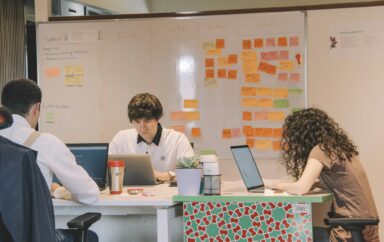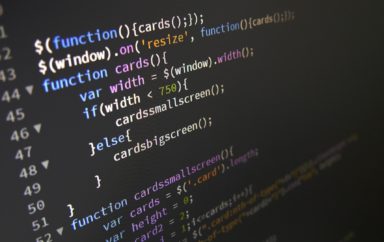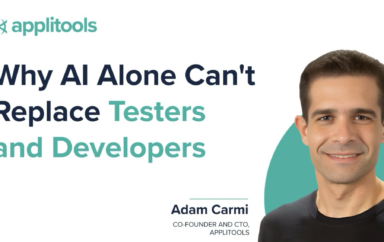In this guide, we’ll explore Visual Artificial Intelligence (AI) and what it means. Read on to learn what Visual AI is, how it’s being applied today, and why it’s critical across a range of industries – and in particular for software development and testing.
From the moment we open our eyes, humans are highly visual creatures. The visual data we process today increasingly comes in digital form. Whether via a desktop, a laptop, or a smartphone, most people and businesses rely on having an incredible amount of computing power available to them and the ability to display any of millions of applications that are easy to use.
The modern digital world we live in, with so much visual data to process, would not be possible without Artificial Intelligence to help us. Visual AI is the ability for computer vision to see images in the same way a human would. As digital media becomes more and more visual, the power of AI to help us understand and process images at a massive scale has become increasingly critical.
What is AI? Background on Artificial Intelligence and Machine Learning
Artificial Intelligence refers to a computer or machine that can understand its environment and make choices to maximize its chance of achieving a goal. As a concept, AI has been with us for a long time, with our modern understanding informed by stories such as Mary Shelley’s Frankenstein and the science fiction writers of the early 20th century. Many of the modern mathematical underpinnings of AI were advanced by English mathematician Alan Turing over 70 years ago.

Since Turing’s day, our understanding of AI has improved. However, even more crucially, the computational power available to the world has skyrocketed. AI is able to easily handle tasks today that were once only theoretical, including natural language processing (NLP), optical character recognition (OCR), and computer vision.
What is Visual Artificial Intelligence (Visual AI)?
Visual AI is the application of Artificial Intelligence to what humans see, meaning that it enables a computer to understand what is visible and make choices based on this visual understanding.
In other words, Visual AI lets computers see the world just as a human does, and make decisions and recommendations accordingly. It essentially gives software a pair of eyes and the ability to perceive the world with them.
As an example, seeing “just as a human does” means going beyond simply comparing the digital pixels in two images. This “pixel comparison” kind of analysis frequently uncovers slight “differences” that are in fact invisible – and often of no interest – to a genuine human observer. Visual AI is smart enough to understand how and when what it perceives is relevant for humans, and to make decisions accordingly.
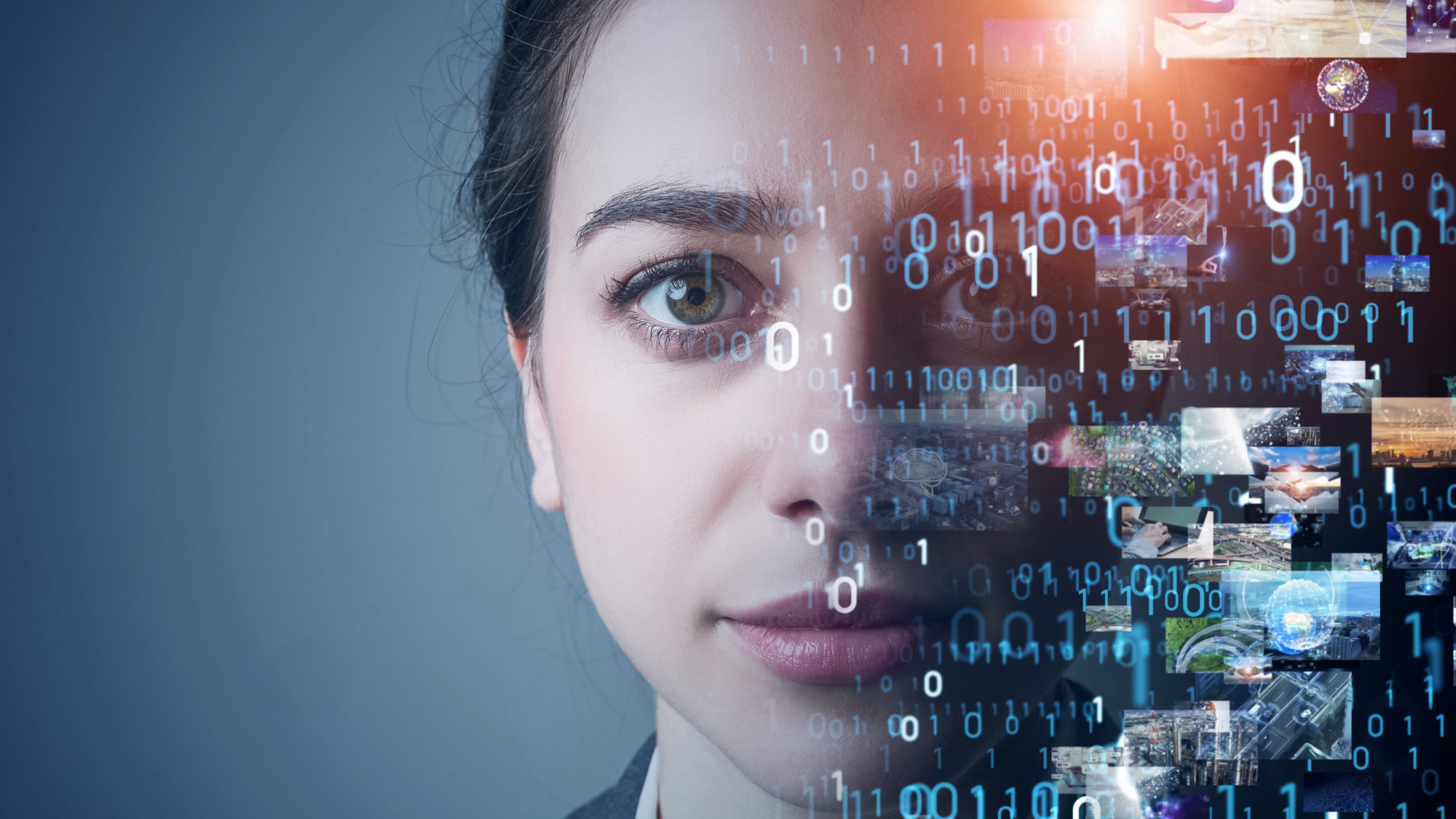
How is Visual AI Used Today?
Visual AI is already in widespread use today, and has the potential to dramatically impact a number of markets and industries. If you’ve ever logged into your phone with Apple’s Face ID, let Google Photos automatically label your pictures, or bought a candy bar at a cashierless store like Amazon Go, you’ve engaged with Visual AI.
Technologies like self-driving cars, medical image analysis, advanced image editing capabilities (from Photoshop tools to TikTok filters) and visual testing of software to prevent bugs are all enabled by advances in Visual AI.
How Does Visual AI Help?
One of the most powerful use cases for AI today is to complete tasks that would be repetitive or mundane for humans to do. Humans are prone to miss small details when working on repetitive tasks, whereas AI can repeatedly spot even minute changes or issues without loss of accuracy. Any issues found can then either be handled by the AI, or flagged and sent to a human for evaluation if necessary. This has the dual benefit of improving the efficiency of simple tasks and freeing up humans for more complex or creative goals.
Visual AI, then, can help humans with visual inspection of images. While there are many potential applications of Visual AI, the ability to automatically spot changes or issues without human intervention is significant.
Cameras at Amazon Go can watch a vegetable shelf and understand both the type and the quantity of items taken by a customer. When monitoring a production line for defects, Visual AI can not only spot potential defects but understand whether they are dangerous or trivial. Similarly, Visual AI can observe the user interface of software applications to not only notice when changes are made in a frequently updated application, but also to understand when they will negatively impact the customer experience.
How Does Visual AI Help in Software Development and Testing Today?
Traditional testing methods for software testing often require a lot of manual testing. Even at organizations with sophisticated automated testing practices, validating the complete digital experience – requiring functional testing, visual testing and cross browser testing – has long been difficult to achieve with automation.
Without an effective way to validate the whole page, Automation Engineers are stuck writing cumbersome locators and complicated assertions for every element under test. Even after that’s done, Quality Engineers and other software testers must spend a lot of time squinting at their screens, trying to ensure that no bugs were introduced in the latest release. This has to be done for every platform, every browser, and sometimes every single device their customers use.
At the same time, software development is growing more complex. Applications have more pages to evaluate and increasingly faster – even continuous – releases that need testing. This can result in tens or even hundreds of thousands of potential screens to test (see below). Traditional testing, which scales linearly with the resources allocated to it, simply cannot scale to meet this demand. Organizations relying on traditional methods are forced to either slow down releases or reduce their test coverage.
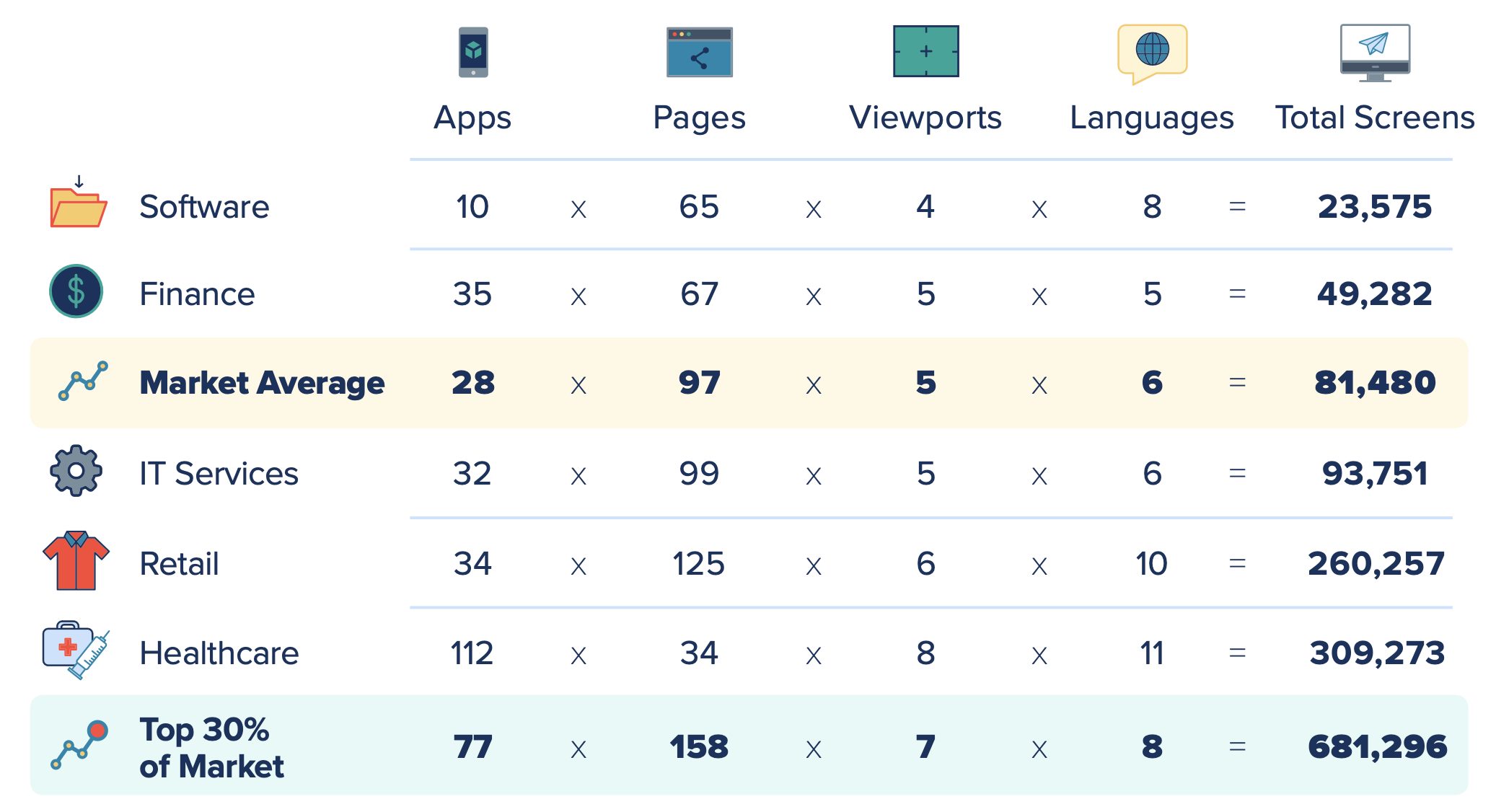
At Applitools, we believe AI can transform the way software is developed and tested today. That’s why we invented Visual AI for software testing. We’ve trained our AI on over a billion images and use numerous machine learning and AI algorithms to deliver 99.9999% accuracy. Using our Visual AI, you can achieve automated testing that scales with you, no matter how many pages or browsers you need to test.
That means Automation Engineers can quickly take snapshots that Visual AI can analyze rather than writing endless assertions. It means manual testers will only need to evaluate the issues Visual AI presents to them rather than hunt down every edge and corner case. Most importantly, it means organizations can release better quality software far faster than they could without it.
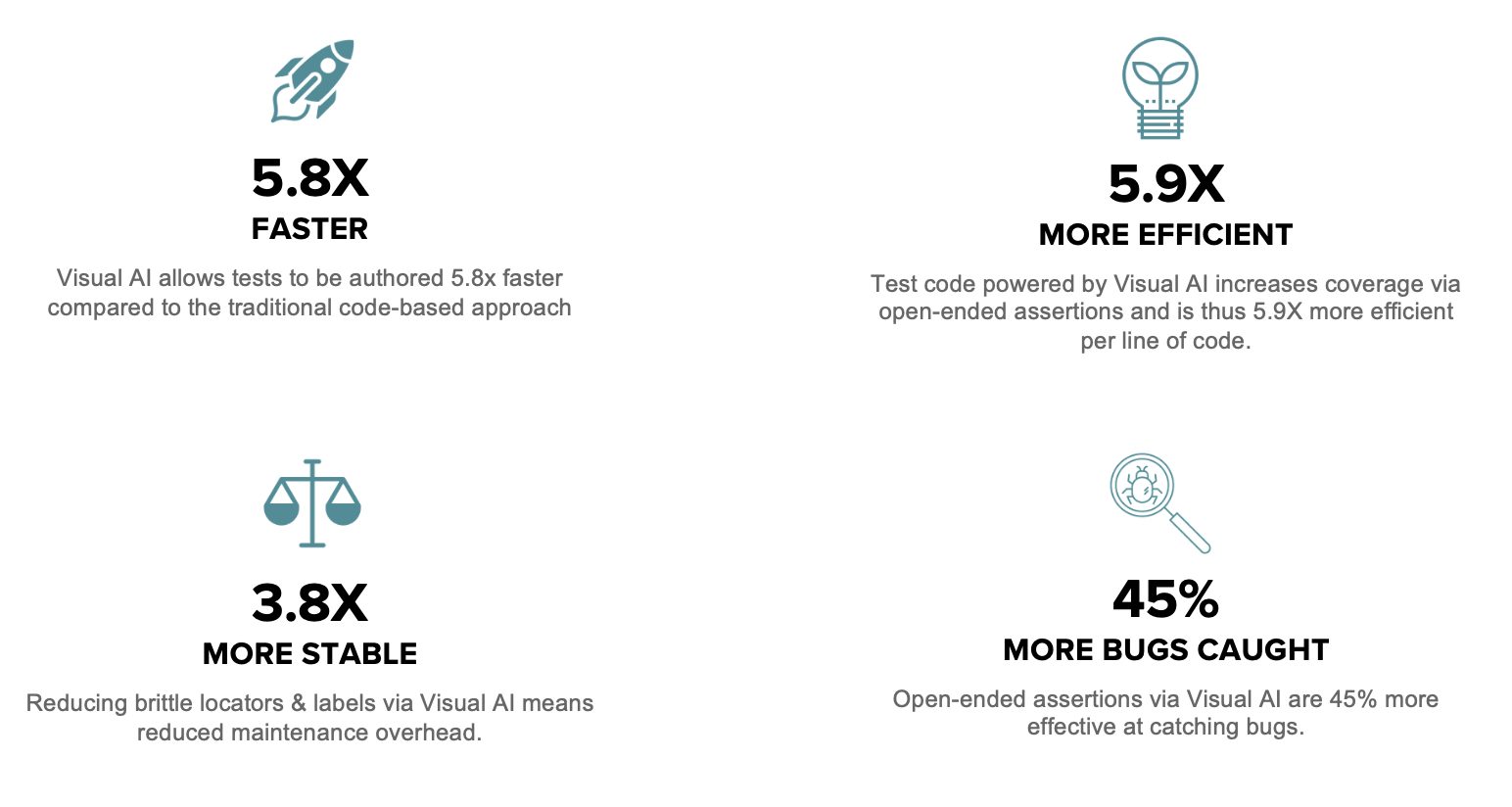
How Visual AI Enables Cross Browser/Cross Device Testing
Additionally, due to the high level of accuracy, and efficient validation of the entire screen, Visual AI opens the door to simplifying and accelerating the challenges of cross browser and cross device testing. Leveraging an approach for ‘rendering’ rather than ‘executing’ across all the device/browser combinations, teams can get test results 18.2x faster using the Applitools Ultrafast Test Cloud than traditional execution grids or device farms.

How Will Visual AI Advance in the Future?
As computing power increases and algorithms are refined, the impact of Artificial Intelligence, and Visual AI in particular, will only continue to grow.
In the world of software testing, we’re excited to use Visual AI to move past simply improving automated testing – we are paving the way towards autonomous testing. For this vision (no pun intended), we have been repeatedly recognized as an industry leader by the industry and our customers.
Keep Reading: More about Visual AI and Visual Testing
What is Visual Testing (blog)
The Path to Autonomous Testing (video)
What is Applitools Visual AI (learn)
Why Visual AI Beats Pixel and DOM Diffs for Web App Testing (article)
How AI Can Help Address Modern Software Testing (blog)
The Impact of Visual AI on Test Automation (report)
How Visual AI Accelerates Release Velocity (blog)
Modern Functional Test Automation Through Visual AI (free course)
Computer Vision defined (Wikipedia)


